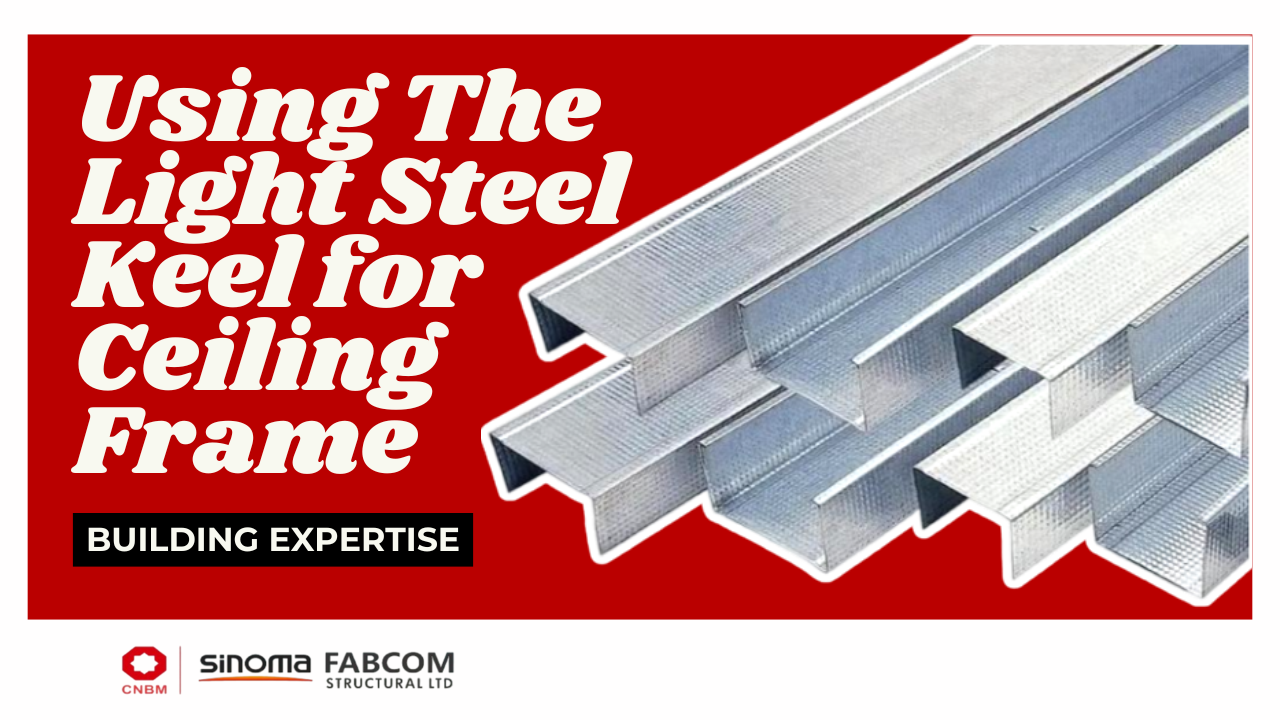You have probably been told wood is the best choice for your ceiling frame, easy to find, affordable, and what “everyone” uses.
But here’s the truth many homeowners discover too late: wood warps, rots, attracts termites, and eventually weakens the ceiling structure.
At Fabcom Structural LTD., we meet customers every month who come in frustrated because their ceiling has started sagging or cracking after just a few years.
Some complain of termites eating through their rafters; others say their carpenter told them the wood was “the best in the market,” only for it to have some issues.
- The Hidden Problems With Using Wood for Ceilings
- What Is Light Steel Keel (Profile)?
- Comparing Light Steel Keel and Wood
- Why More Homeowners Are Switching to Light Steel Keel
- Advantages of Using Light Steel Keel for Ceilings
- What Makes Our Light Steel Keel Different
- How To Install The Light Steel Keel
- Cost and Value Upfront
- Frequently Asked Questions (FAQ)
- Why Choose Fabcom Structural for Your Ceiling Frame
- Hear Us Out
Then there are those who built their roof frame with wood, but due to one delay or another, maybe the roofing materials didn’t arrive on time, or the installation was postponed, the entire frame was left exposed for weeks. Under the harsh sun and rain, the wood begins to bend, swell, or split. By the time the roofing sheets finally arrive, part of the frame has to be redone before installation can even begin. That is extra cost, wasted time, and unnecessary frustration.
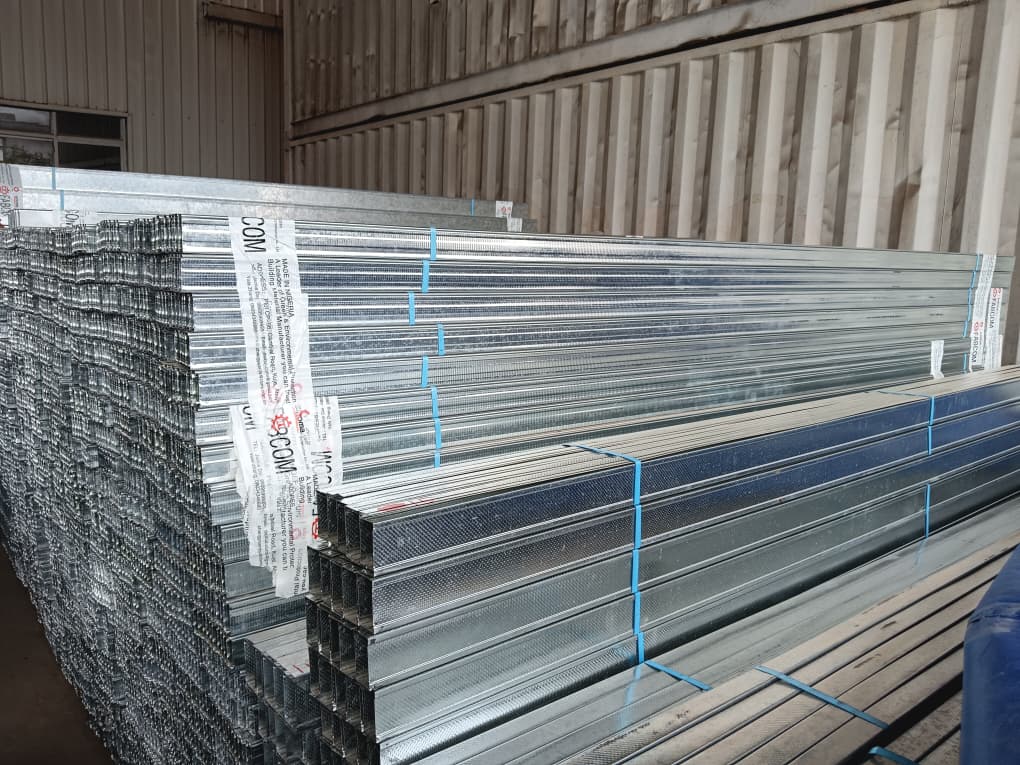
The Hidden Problems With Using Wood for Ceilings
Wood has served generations of builders well. It is familiar, easy to work with, and locally available. But the environment today is different, hotter, more humid, and filled with cheaper, untreated timber that simply doesn’t last.
The real issues homeowners face with wooden ceiling frames:
1. Termite Infestation
Nigeria’s tropical climate makes wood a perfect food source for termites. Once those termites find it, they will not stop until it is hollowed out. You won’t even notice until the ceiling starts dipping or cracking.
2. Moisture and Rot
In humid areas or building with poor ventilation, wood absorbs moisture. Over time, it expands, warps, and even decays. This affects your ceiling alignment and aesthetics.
3. Fire Hazard
Wood burns fast. One electrical fault in the ceiling area can turn a small spark into a dangerous fire. Steel, on the other hand, doesn’t burn.
4. Long-Term Cost
Wood may seem cheap initially, but by the time you replace damaged sections, repaint the ceiling, and treat termite infestations, you’ve spent double the cost of a durable steel structure.
We once had a homeowner in Abuja who had to rebuild his entire ceiling just three years after completing his house because he had a termite infestation in his ceiling.
While discussing with a supplier in the market, he was told about the light steel keel used for ceiling frames, and that conversation changed everything.
What Is Light Steel Keel (Profile)?
Light steel keel is a structural support system made from galvanized or zinc-aluminum coated steel. It replaces the traditional wooden framework used for ceilings and partitions.
Our light steel keels are manufactured with precision machinery that ensures each profile is straight, uniform, and durable. They come in different thicknesses and shapes to support all kinds of ceiling materials, from POP and PVC to gypsum and acoustic boards.
Unlike wood, which can vary in shape, thickness and quality, each steel profile is exact. That means your ceiling sits flatter, tighter, and stays beautiful for years.
Comparing Light Steel Keel and Wood
| Feature | Light Steel Keel (Profile) | Wood (Traditional Frame) |
|---|---|---|
| Strength | High tensile strength; doesn’t bend or warp | Weakens with age; absorbs moisture |
| Durability | Rust-resistant and termite-free | Prone to termites, rot, and mold |
| Fire Resistance | Non-combustible | Highly flammable |
| Maintenance | Almost zero | Requires constant inspection and repair |
| Weight | Lightweight and easy to handle | Heavier when wet or untreated |
| Installation | Fast and clean | Slower and messier |
| Cost Over Time | Saves more in the long run | Frequent replacements increase cost |
| Environmental Impact | 100% recyclable | Contributes to deforestation |
The difference is clear: light steel keel wins in strength, safety, and longevity.
Why More Homeowners Are Switching to Light Steel Keel
Let’s talk about real-life results.
A homeowner in Kuje, Abuja, recently came to Fabcom during our partnership campaign. He was building his house and initially planned to use wood. After visiting our factory and learning about light steel keel, he decided to switch.
Here is what he told us after the installation:
“I don’t worry about ceiling sag anymore. The installation was faster, and the finish is cleaner than anything I’ve seen.”
That is what we want to stands for, smarter materials that make construction simpler, cleaner, and longer-lasting.
Common reasons homeowners switch:
- No more termites or rot
- Perfectly straight ceiling frames
- Faster installation
- Zero fire risk
- Better long-term value
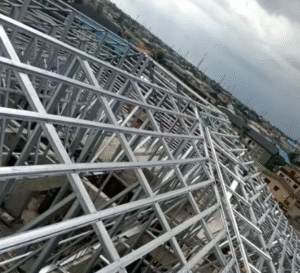
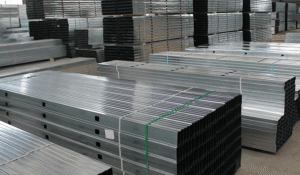
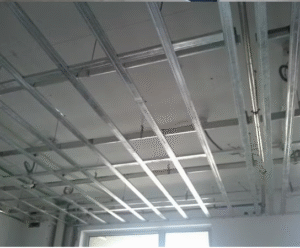
Advantages of Using Light Steel Keel for Ceilings
1. Durability and Strength
The light steel keel is made from high-tensile steel, coated with zinc and aluminum for maximum protection. It doesn’t warp, shrink, or expand with heat, meaning your ceiling stays straight and stable for decades.
2. Smooth and Uniform Finish
Every profile is precisely engineered. When ceiling boards are fixed, they align perfectly, no waves or dips. That professional finish gives your interior a polished look.
3. Termite and Mold Resistant
Unlike wood, steel doesn’t attract pests or support fungal growth. This makes it ideal for coastal and humid regions like Lagos, Port Harcourt, and Calabar.
4. Fire Resistant
Light steel keel is non-combustible. It doesn’t feed fire, which means it adds an extra layer of safety to your home.
5. Cost Efficiency
Though it may cost slightly more than untreated wood initially, you will save money in maintenance and repairs over time. No need for anti-termite treatments, frequent repainting, or replacements.
6. Environmentally Friendly
Every steel profile is recyclable, reducing the pressure on forests and natural wood resources. Building sustainably starts with smarter material choices.
What Makes Our Light Steel Keel Different
At Fabcom Structural Ltd, quality is non-negotiable.
Our light steel keel profiles are manufactured using advanced roll-forming technology, ensuring consistent thickness, shape, and protective coating.
Each piece is galvanized to prevent rust and tested for load performance, meaning you get structural reliability that meets both local and international standards.
- Reliable supply and faster delivery
- Affordable pricing without middlemen
- Direct technical support from our team
Every profile leaving our factory line is without bends, cracks, and corrosion.
How To Install The Light Steel Keel
Builders often say that once they try light steel keel, they never go back to wood, and here is why:
Step-by-Step Process:
- Layout Planning: Marking ceiling grids and alignment.
- Profile Cutting: Cutting steel to precise lengths using light tools.
- Framework Assembly: Connecting main and cross keels.
- Ceiling Board Fixing: Attaching POP, PVC, or gypsum boards securely.
- Finishing: Sealing and painting the surface.
Because each profile is lightweight, handling is faster, and installation time is reduced by up to 30–40% compared to wood.
And since steel hardly split or bend, the ceiling stays firm even years after installation.
Cost and Value Upfront
Let’s talk numbers, because that is what you care about.
A lot of people say: “Steel is expensive.” But is it really?
When you consider:
- Termite damage repair
- Painting and polishing wood frames
- Ceiling replacements after a few years
- Labour cost for woodwork reinstallation
…the total cost of wood doubles or even triples within a decade.
With light steel keel, you invest once and enjoy peace of mind.
It is a case of “buy right, not twice.”
One of our clients in Ogun State calculated that switching to light steel keel saved him nearly ₦500,000 across five bungalows mostly because he didn’t have to repaint or fix sagging ceilings after rain season.
Frequently Asked Questions (FAQ)
Q: Can light steel keel rust?
A: The light steel keel (profiles) are zinc-aluminum coated, meaning they resist rust and corrosion even in humid conditions.
Q: Is it heavier than wood?
A: No. Light steel keel is actually lighter, which makes installation faster and reduces load on the building structure.
Q: Can it support POP and gypsum boards?
A: Absolutely. It’s compatible with POP, PVC, gypsum, acoustic, and even specialized ceiling boards
Q: Can I use it in an existing ceiling?
A: Yes. Builders can retrofit light steel keel into existing structures if the roof space allows.
Why Choose Fabcom Structural for Your Ceiling Frame
Fabcom Structural is Nigeria’s trusted manufacturer of roofing materials and provider of complete roofing systems, with a mission to build better materials for a better world.
When you buy light steel keel from us, you’re choosing:
- Consistent product quality
- Proven performance in Nigerian climates
- Expert guidance on installation and specification
- Reliable after-sales support
We provide materials, that give you the confidence that your building will stand firm for decades.
Hear Us Out
I have seen how often people rush to use wood because it is what everyone around them does. But after a few months, the same story repeats itself, from the ceiling is bending, or termites is quietly eating through the beams.
That is why we keep talking about light steel keel. Not because it is trendy, but because it genuinely saves people from redoing work they have already paid for. If you’ve ever had to repair a ceiling twice, you know what I mean.
For more information, use the form below or send us a message on WhatsApp!
Your message has been sent
Our team will contact you shortly within 24 hours with your quote and more information about your roofing needs. Thank you

